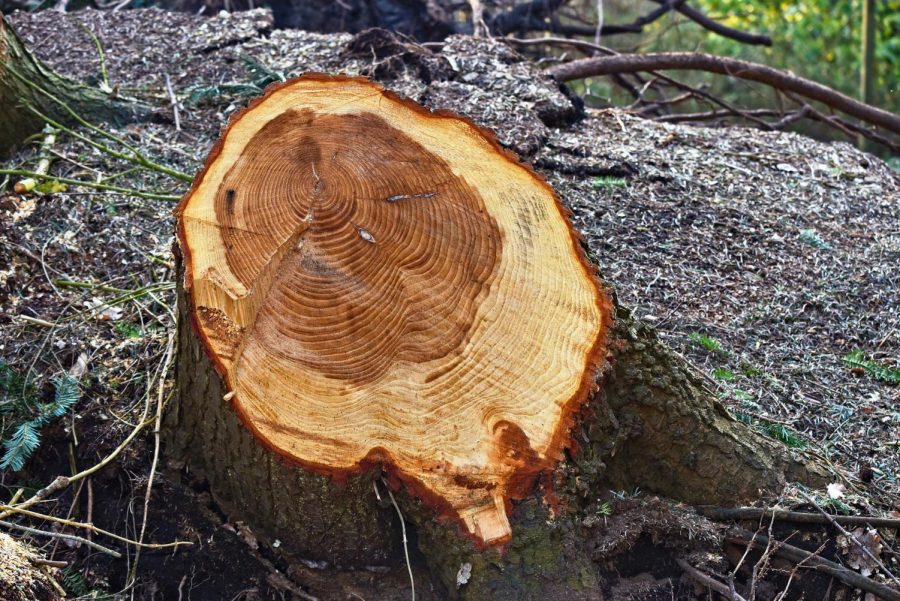Research determines link between crops, climate change
Historical cooling may have affected trading routes, farm techniques
Evidence from tree rings and shells in the ocean suggest climate cooling changed crop growth in Asia.
November 8, 2018
Research about climate cooling thousands of years ago offers new insight into how societies changed their diets, agricultural practices and trade routes to adapt to the change.
WSU adjunct professor Kyle Bocinsky and former WSU professor Jade d’Alpoim Guedes are studying the effects of cooling events between 5,000 and 1,000 years ago in Asia.
To determine the timeline for the events, researchers used a paleoclimate record from sources including tree rings or shells in the ocean which have information about the ancient climate, d’Alpoim Guedes said.
“The record gives us a picture of how climate changed over that time,” she said.
A paleoclimate record only has information from a particular spot, she said. Using that data, she said they created a spatial model for their research areas using statistical techniques to create a map of the ancient climate.
One of the things they had to take into account was that high-elevation environments like the Tibetan Plateau increase temperature at a higher rate than other environments, d’Alpoim Guedes said.
Bocinsky said he developed much of the code they used which reconstructs weather station data and global climate models to create a model for their data on crops being grown in specific climates.
“We do a reconstruction of the probability of being in a thermal niche for a particular crop,” Bocinsky said. “As output, [the code] gives you a certain probability that a certain crop will flourish.”
The researchers found there were a few times when the Earth cooled, one of which occurred from around 3,750 years ago to 3,000 years ago, he said.
Many staple crops could not adapt to the colder conditions, d’Alpoim Guedes said.
“It was difficult for people to cultivate the types of crops that they used to,” she said.
When the cooling occurred, people had different strategies to adapt to it, Bocinsky said. Some diversified their crops or migrated to somewhere warmer. Others changed from an agricultural society to a pastoralist society in which they raised animals, he said.
In some high-elevation environments where people had mainly been growing ancient grains called millets, they started growing other crops too, he said.
Even though the researched climate change took place over a much longer period of time than today’s climate change and the Earth was cooling, not warming, there is still something that can be learned from it, d’Alpoim Guedes said.
“If you look at the Palouse, you can see that it’s mainly wheat,” she said. “It leaves you very open to risk if something goes wrong.”
The risk-reduction strategies people used thousands of years ago such as diversification of crops is something people today should take heed of, d’Alpoim Guedes said.
Another finding from the research showed evidence of early trade routes brought on by climate change.
As archaeologists, Bocinsky said sometimes it is assumed that if wheat is found, then people were growing it there. However, where grains have been found is not always where they were grown.
“What we found out is that [growing certain crops] was highly unlikely in places that were too high or too cold,” Bocinsky said.
Instead, those living at high elevations would trade for specific crops, he said.
“During later periods you also see the development of trade routes, of long-distance exchange of people at high elevation where it might not make a lot of sense for them to grow a lot of crops,” Bocinsky said.
One such trade route was the Silk Road, d’Alpoim Guedes said.
Farmers would sell crops such as rice, wheat or barley to pastoralist societies that would in turn trade animal products like butter, meat, hide or leather goods, she said.
Around 1,600 years ago, it became too cold in Northern China to grow many crops, so there was a migration of farmers who moved to Southern China, d’Alpoim Guedes said. Chinese emperors worked to create new infrastructures such as the Grand Canal that allowed for grain to be shipped from Southern to Northern China.
For those interested in taking a closer look at the research, d’Alpoim Guedes and Bocinsky published all their climate reconstruction code online to download. It is also possible to change the code to look at different time periods and crops. The code is linked in their paper “Climate change stimulated agricultural innovation and exchange across Asia.”





















